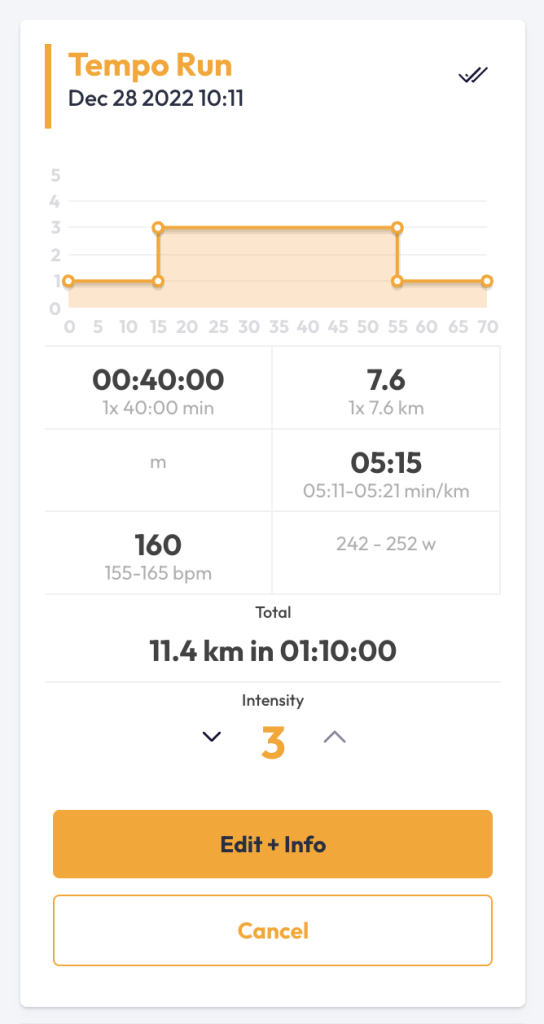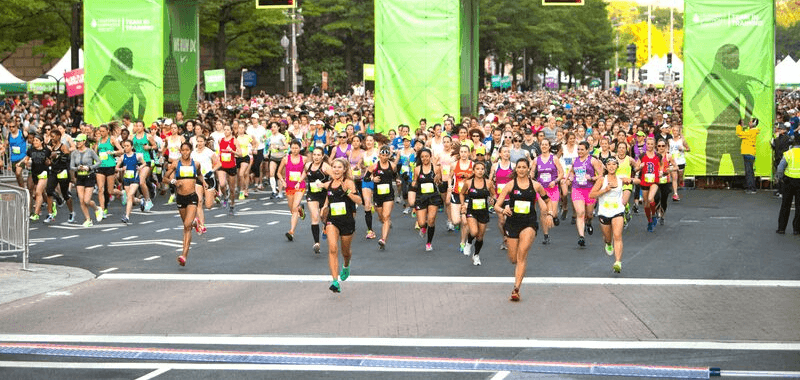Tabla de contenido
Many running training plans include a “tempo” session, so we would like to explain this routine to those unfamiliar briefly.
What is tempo training?
Jack Daniels popularized the term tempo run to refer to a type of training in which you run at a “strong but controlled” pace. According to Lewis Moses, British indoor 1,500m champion in 2012 and now a running coach, tempo running is also known as “LT1,” threshold training, or lactate training.
Tempo training can consist of a continuous run of up to 10 kilometers or long intervals with short recovery times. It is an excellent way to prepare for 10-kilometer (10K), half-marathon, and marathon races. Moses explains that maintaining a tempo pace when running is often more difficult for less experienced athletes. One way to decrease the difficulty would be to use what Daniels calls “cruising intervals” (also known as “tempo repeats”).
Tempo intervals require a run to be broken into non-continuous stretches with short recoveries (Moses recommends 20-30 seconds). Over time, he suggests decreasing the intervals and doing increasingly continuous runs at a tempo pace. Another way is to increase the run’s distance so that you spend more time in the tempo zone.

Moses explains that in physiological terms, a tempo run is run at the level at which the body has the capacity to clear as much lactate as it produces – that is, it is basically running at the fastest pace at which you can run aerobically. It involves a prolonged duration of activity at 80-85% of your maximum effort.
Moses suggests that even if runners use a stopwatch, they should work out tempo pacing using the sensations they experience during the run and their heart rate.
Kevin Beck, a coach and running expert, explains that tempo is similar to “holding your hand just above the flame.” It’s fast but not super-fast.
Hills or inclines can also be used for tempo. This is the preferred method of Ryan Hall, the U.S. half-marathon record holder. However, be warned that your pace will be considerably slower than running on flat terrain, although the intensity perception will be similar.
How do we estimate running paces for tempo training?
According to Daniels, this pace is, for many people, about 15-20 seconds per mile, slower than the equivalent pace for a 5K race. For example, if you run 5K in 20 minutes, you would run each mile in 5 minutes. In this case, your tempo would be about 15-20 seconds above this pace or about 5:15-5:20.
If you want to do some simple calculations to estimate your training paces (including tempo) from a recent 5K or 10K race result, I recommend using a pace calculator.
In our custom running.COACH training plans, we will automatically calculate your tempo routine.

What are the benefits of tempo training?
When the body metabolizes glucose, lactic acid is produced as a byproduct. A tempo run increases the lactate threshold, which, to put it further, is essentially the point at which lactic acid begins to build up significantly in the muscles. This will help you run faster for longer, so Moses believes that “tempo running should be a staple part of your running ‘diet’ all year round.”
How often should we do tempo training?
As for the frequency of tempo practice, some data we have found is that experts recommend not doing more than one session per week and that it should not exceed 10-15% of your total training that week. Moses agrees with this, noting that “a tempo run doesn’t have to be done every week. You can readjust your training microcycle accordingly.”
If you liked this article, you can also read:
Speed training for runners | Soymaratonista
When to start doing speed work | Soymaratonista
Looking for a plan that trains with you, not against you?
At running.COACH, we don’t just build a schedule. We create a smart, living plan that evolves with you. It understands your level, your race goals and your real life. Whether you sync your GPS watch or train straight from our iOS or Android app, your plan adjusts automatically as you improve.
From day one, you’ll feel the difference:
- A fully personalized, dynamic plan designed for you.
- Automatic sync and effortless workout tracking.
- Real-time updates when life happens, including missed sessions, new races or schedule changes.
- Simple, science-backed guidance to train smarter and recover faster.
🎁 Start today and enjoy your first 30 days free.
Because the best training plan isn’t one you follow. It’s one that follows you.app.











0 Comments